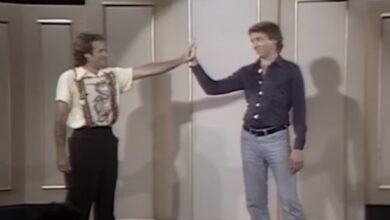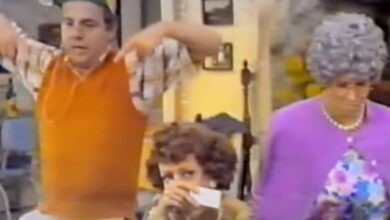Gene Pitney’s “Only Love Can Break a Heart” Stands Tall as One of 1962’s Most Iconic and Heartfelt Ballads
Gene Pitney’s 1962 hit Only Love Can Break a Heart marked a pivotal moment in his career, establishing him as one of the most emotionally compelling voices of his generation. The song, crafted by legendary duo Burt Bacharach and Hal David, featured heart-wrenching lyrics and a sweeping orchestral sound that resonated deeply with audiences. Though it peaked at No. 2 on the Billboard Hot 100, just behind The Crystals’ He’s a Rebel, it became Pitney’s most enduring U.S. success and a cornerstone of his legacy.
Hailing from Hartford, Connecticut, Pitney showed musical talent from an early age. During his teenage years, he formed a band and began developing his songwriting abilities. Initially recognized more for his writing than performing, he was the mind behind hits like Bobby Vee’s Rubber Ball and Ricky Nelson’s Hello Mary Lou. His unique voice—rich, theatrical, and filled with emotion—would soon lead him to solo stardom, with Town Without Pity introducing him to a broader audience before Only Love Can Break a Heart made him a household name.
The song originated from the masterful pairing of Bacharach and David, who were behind many of the most unforgettable tunes of the 1960s. With Bacharach’s intricate melodies and David’s deeply emotional lyrics, the duo created a song that captured heartbreak in its purest form. The melody was refined yet aching, and Pitney’s passionate vocal performance brought an added depth that made the song timeless. Bacharach would later highlight Pitney’s rendition as a standout interpretation of their work together.
Tracking for Only Love Can Break a Heart took place at Bell Sound Studios in New York City, with Bacharach directly involved in the production. The arrangement featured sweeping strings and delicate instrumentation that underscored the emotional core of the lyrics. Pitney’s voice carried a sense of genuine vulnerability, effortlessly conveying the song’s theme of emotional devastation. The musical structure included complex harmonic transitions—something of a trademark for Bacharach—and elevated the piece far beyond typical early ’60s pop fare.
Upon release, critics and fans alike responded with enthusiasm. Pitney’s vocal style—expressive but never exaggerated—drew widespread praise. The song quickly gained momentum on radio, especially among listeners drawn to its sincere portrayal of love and pain. Though it missed the top spot on the Hot 100, it reached No. 1 on the Easy Listening chart, expanding Pitney’s appeal to a broader demographic and solidifying his crossover potential between pop and adult audiences.
During a time when rock and roll was dominating the airwaves, Only Love Can Break a Heart showcased the power of emotionally driven ballads. It helped bridge the stylistic gap between the more orchestrated pop of the 1950s and the innovative songwriting emerging in the 1960s. Its layered composition and heartfelt narrative ushered in a new appreciation for ballads that could be both commercially viable and artistically profound.
The song also played a crucial role in elevating Pitney’s international career. While he had already enjoyed success in the U.S., Only Love Can Break a Heart opened new doors in the United Kingdom and other countries. His ability to alternate between dramatic ballads and upbeat tracks made him a versatile performer. He soon became a staple on TV variety shows and embarked on global tours that connected him with audiences far beyond American borders.
Its impact wasn’t limited to Pitney alone. The song’s lush orchestration and emotional depth became a template for future artists looking to blend sophistication with mainstream appeal. Musicians like Dionne Warwick and Dusty Springfield would later adopt similar techniques in their own collaborations with Bacharach and David. The track helped define the emerging genre that would become adult contemporary, combining classic orchestral arrangements with accessible pop melodies.
Only Love Can Break a Heart was embraced by artists across genres. In 1972, Sonny James reimagined it as a country song, reaching the Top 10 on the Country Charts and proving the song’s flexibility. Other renditions followed, including versions by Jack Jones and Bobby Vinton, each offering unique interpretations. Still, Pitney’s original continues to be held in the highest regard for its sincerity and grandeur, often cited as the definitive version of the song.
At the time of the song’s release, Pitney was evolving both as a singer and songwriter. With a growing catalog of hits and an expanding artistic vision, he found new creative partnerships with the likes of Bacharach and David. Only Love Can Break a Heart allowed him to fully showcase the emotional range of his voice and established him as a leading figure in early ‘60s pop music.
Even after decades have passed, Only Love Can Break a Heart continues to hold a special place in the hearts of music lovers. It’s frequently featured on classic radio stations and in retrospectives of the best love songs of all time. Its message—simple, timeless, and deeply human—still resonates with listeners from all walks of life, proving that true emotion in music never fades.
More than just a chart hit, the song helped influence the development of pop ballads and the rise of orchestral pop throughout the 1970s. It set a precedent for blending heartfelt storytelling with elegant musical arrangements. Its balance of emotional weight and musical finesse became a reference point for artists seeking to blend commercial appeal with genuine artistry in their work.
Though Gene Pitney passed away in 2006, his contributions to popular music remain unforgettable. His distinctive voice and ability to breathe life into every lyric continue to inspire singers and songwriters alike. Only Love Can Break a Heart endures as a poignant reflection of his talent and a lasting symbol of love’s bittersweet complexity, preserving Pitney’s memory for generations to come.





